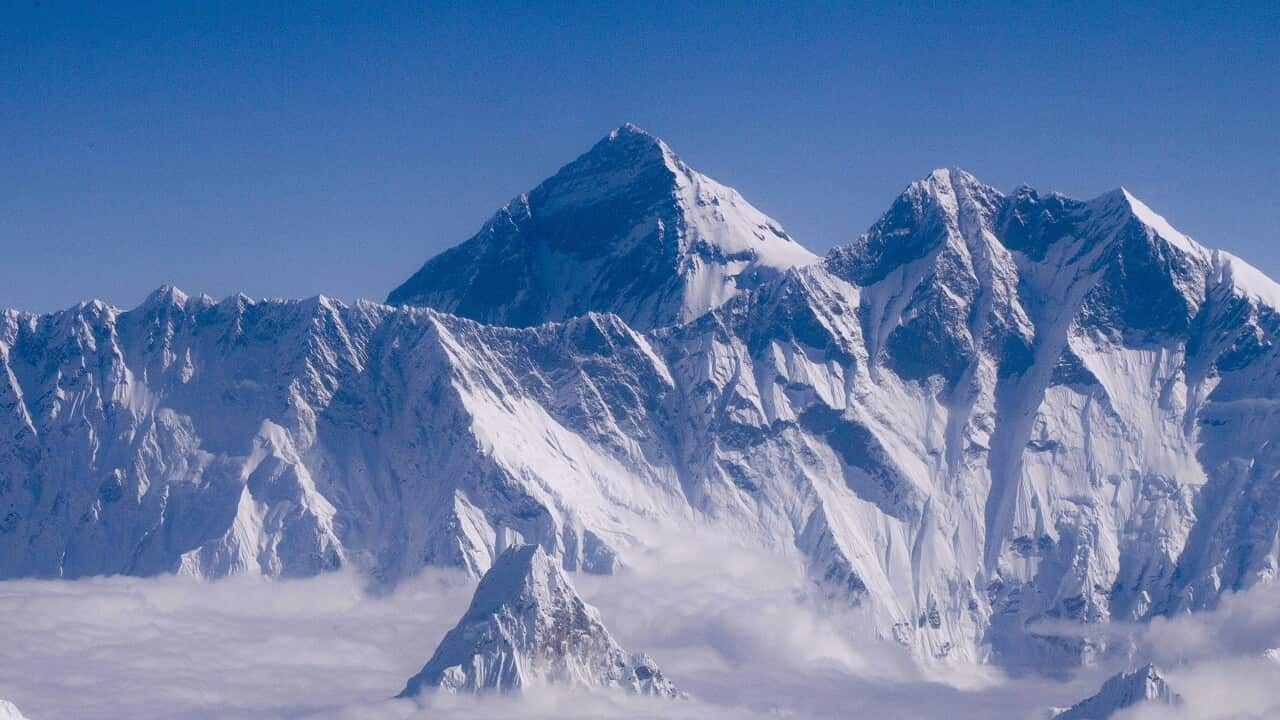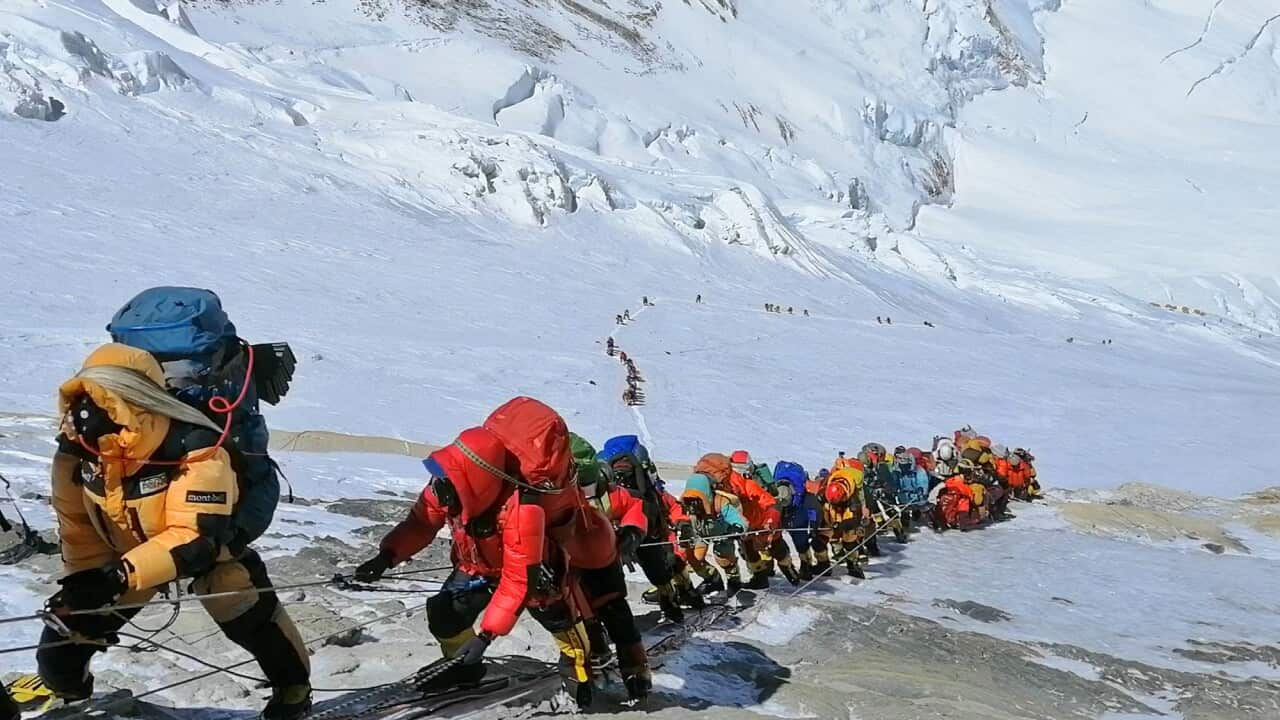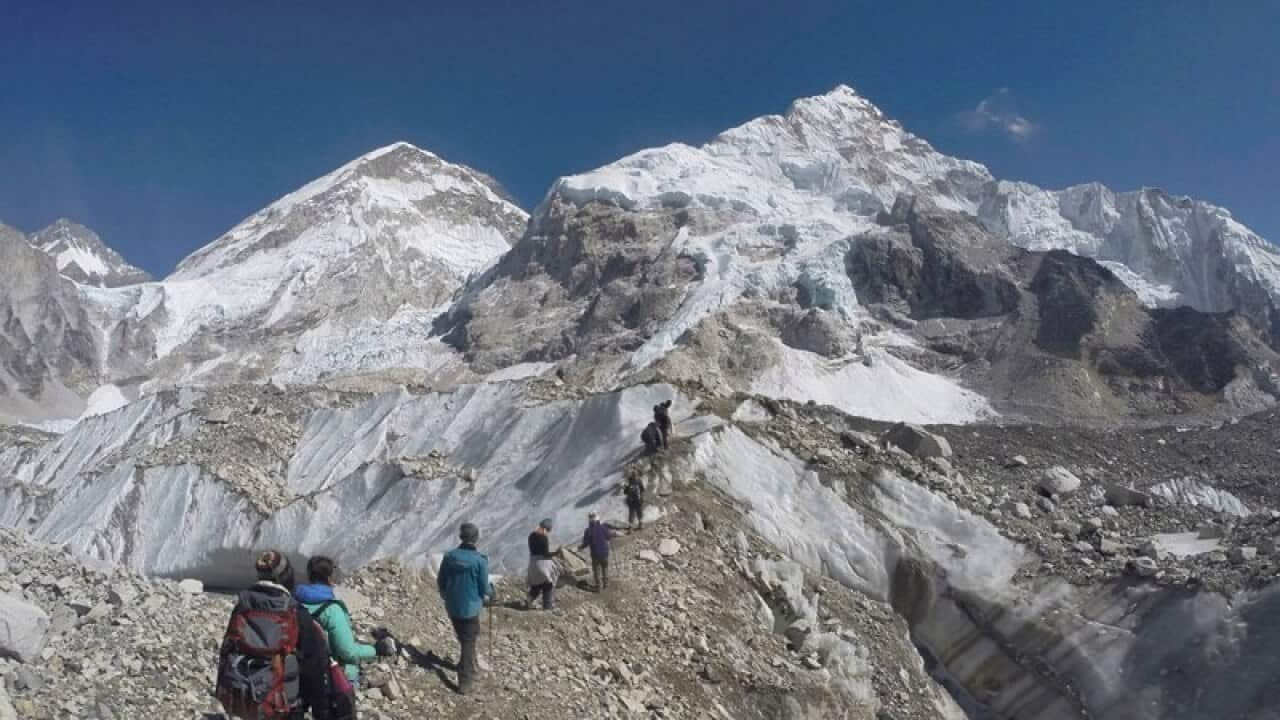The Nepali government is blaming climate change and human activities for rapidly melting ice and snow at the campsite.
It says such changes are putting human lives at risk.
Currently, climbers first stay at the Base Camp located 5,364 metres above sea level before summiting the 8,850-metre peak.
Every year at the beginning of mountaineering season in April and May, thousands of people erect hundreds of tents at the campsite over an area of about a square kilometre.
Mountaineers and their assistants live there for approximately two months, acclimatising to the rarified air of the high altitude.
And locals say this leads to the phenomenon of sloping; the site that seems plain and flat in April looks somewhat sunken by the end of May.
Tshering Sherpa is the CEO of a local committee working towards cleaning Sagarmatha (the Nepali name of Mount Everest).
The head of the Sagarmatha Pollution Control Committee (SPCC) says he's observed this spectacle year after year.
"The landscape of the Base Camp changes during those months. There are rocks, sand and gravel on the ground, but below it is ice. In April, the campers smoothen the ground to stake out their tents," he says.
"But as the ice melts, the ground becomes uneven and rocky. That makes the camp vulnerable."
Just in the past few years, many mountaineers have observed water in places that used to be full of snow and ice.
Purnima Shrestha, a Nepali mountaineer who summitted Everest in 2018, has been climbing other mountains in the Himalayas to raise awareness about the impacts of climate change.
In 2022, she was at the Base Camp again to summit nearby Mount Lhotse.
She says the changes she witnessed at the site appalled her.
"Small lakes have formed where the ice has melted. The Base Camp stands on the Khumbu Glacier, but today the glacier is receding, and water flows in place of snow. It's like a canyoning site," she tells SBS Nepali.
"We used to take jerkins to carry water at Camp 2 and bring water from nearby lakes. Today, water flows by every tent at Camp 2; there is no need for such jerkins."
"I was sleeping in a tent at 6,400 metres above sea level, but the sound was like at a riverside," says Ms Shrestha.
According to estimates, humans excrete about 4,000 litres of urine daily during the peak season.
The urine not only pollutes the origin of the Dudh Koshi River but also expedites the melting of the glacier, say locals.
Authorities say the glacier is melting so fast that the danger of crevasses appearing at the camp overnight has increased.
‘Decision pending’
Based on these realities, the Everest Monitoring and Coordination Committee of the Tourism Department in Nepal has recommended shifting the Base Camp from its current location.
"The camp sits directly over ice. We want to shift it away from the ice so that the melting affects it less," says Bishwaraj Bhattarai from the Department of Tourism in Kathmandu.
"There is also the question of danger; if a crevasse opens up in the ice, a person sleeping in the tent at Base Camp can get swallowed without warning."
"Also, there is a lot of pollution there."
But Bhattarai warns that no formal decision has been taken on the matter yet.
"We have had some preliminary discussions about it. We have not made a written decision yet," he says.
"It's not a decision the department can take; the government needs to do it. It is a big issue that has remained pending for a long time," Mr Bhattarai tells SBS Nepali.
"We need to discuss this with all the stakeholders and move ahead if it is right. It will take time."
Where will the newly mooted camp be located?
The proposed new campsite is a few hundred metres below the present Base Camp, where it does not snow.
The open space with grasslands has plenty of room for tents.
This shift would not impact local people and businesses, but it would be easier to transport materials to the new place.
"The Base Camp is at an isolated place now; there are no local businesses there," says Tshering Sherpa.
"You must take everything on yaks or carry things manually at the Base Camp."
Mr Sherpa says the proposed space is easier to reach and safer for humans and yaks, which are used in the Himalayas to porter equipment and supplies.
"To reach the base camp, you must walk over some parts of the glacier, which is dangerous for humans and yaks. The new campsite would avoid that problem," says Mr Sherpa.
However, Mr Sherpa says that the government should also make plans for waste disposal at the new campsite because waste is so pervasive at the current site.
If the camp moves to the new location, mountaineers would have to walk an extra couple of hours from the base camp to the next camp, but the government says there is still some time for that.
This report is also available in Nepali language:

सगरमाथा बेस क्याम्प सार्न छलफल सुरू, सरकारी पक्ष भने तत्काल निर्णय नगर्ने पक्षमा









